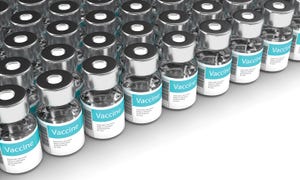A Comprehensive Look at Fall Nitrogen Application
In a recent issue of the University of Illinois Bulletin, Fabian Fernandez, assistant professor in the Department of Crop Sciences, provides an overview of the "What, When, Where and How" associated with fall nitrogen application. Fernandez says organic fertilizers derived from animals (manure, poultry litter, etc.) are good for use in the fall, providing nitrogen as well as phosphorus, potassium and other crop nutrients. Often, these organic fertilizers represent a less expensive source of nutrients compared with inorganic fertilizers, he adds.
October 12, 2011

In a recent issue of the University of Illinois Bulletin, Fabian Fernandez, assistant professor in the Department of Crop Sciences, provides an overview of the "What, When, Where and How" associated with fall nitrogen application. Fernandez says organic fertilizers derived from animals (manure, poultry litter, etc.) are good for use in the fall, providing nitrogen as well as phosphorus, potassium and other crop nutrients. Often, these organic fertilizers represent a less expensive source of nutrients compared with inorganic fertilizers, he adds.
While many inorganic nitrogen sources are available in the marketplace, for fall application in states such as Illinois, the only recommended sources are anhydrous ammonia (NH3) and ammonium sulfate ([NH4]2SO4). Ammonia transforms quickly to ammonium (NH4+), and nitrogen in ammonium sulfate is already in the ammonium form. Ammonium is adsorbed onto the exchange sites in soil particles and organic matter and, thus, is protected from leaching.
By contrast, nitrogen sources containing nitrate (NO3-) should not be used in the fall because nitrate is not adsorbed onto exchange sites in the soil and can be easily leached or denitrified long before corn plants are ready to use it. Common fertilizers that contain nitrate include ammonium nitrate (NH4NO3) and urea ammonium nitrate (UAN).
Another common nitrogen source is urea (CO[NH2]2). Urea converts to NH3 and then to NH4+ within a few days of application. However, research results indicate that this fertilizer should not be used in the fall because it has a greater risk of loss compared with anhydrous ammonia before rapid nutrient uptake by the crop the following spring. The same can be said of polymer-coated ureas. While the coating protects urea for a while, often urea starts to diffuse out of the granule too early and the loss potential is higher than for anhydrous ammonia.
One of the benefits of anhydrous ammonia is that it kills nitrifying bacteria (which are responsible for the transformation of ammonium to nitrate) at the point of application. In addition, as ammonia reacts with water to form ammonium, the reaction creates an alkaline (high pH) environment in the ammonia retention zone. This high pH also inhibits activity of nitrifying bacteria for a while, but the effects are temporary.
To lengthen the period of bacterial inhibition, it is always a good idea to include a nitrification inhibitor with the application of anhydrous ammonia. Many years of research have indicated that nitrification inhibitors, such as dicyandiamide (DCD) and N-serve, can protect fall nitrogen against loss and increase the amount of nitrogen present in the ammonium form the following spring.
Fernandez points out, as with most practices, the use of a nitrification inhibitor might not pay every year. For example, if the following spring is dry and cool, the inhibitor might not be as beneficial in enhancing ammonium recovery. However, this practice will help ensure the greatest chance to protect a nitrogen investment and enhance environmental protection, he adds.
From the standpoint of production profit, in times when nitrogen prices were low, it was cheaper to buy additional nitrogen rather than the nitrification inhibitor. As nitrogen prices increase and the cost of nitrification inhibitors remains relatively constant, using an inhibitor is becoming more profitable. Still, while an inhibitor represents an added cost, it is important to realize that a reduction in nitrogen efficiency due to losses, plus the environmental degradation linked to nitrogen loss also represent added costs. Farmers must carefully consider all these factors when deciding to apply nitrogen in the fall, according to Fernandez.
He says ammonium sulfate is an excellent nitrogen source for no-till fields where broadcast applications are preferred. Fernandez urges producers to apply it before soils freeze so the fertilizer can be dissolved and incorporated into the soil by rain. In fields with minimal slope (less than 5%) and where the potential for runoff is very low, it is feasible to apply ammonium sulfate on frozen ground because there is no concern of volatilization loss. An important point to remember is that ammonium sulfate is more acidifying than other nitrogen sources, so Fernandez tells producers to make sure to keep an eye on soil pH. As a general rule, 5 lb. of lime is needed to neutralize 1 lb. of nitrogen from ammonium sulfate, compared with 2 lb. of lime needed per 1 lb. of nitrogen from anhydrous ammonia.
This fall, much as the fall of 2010, harvest in Illinois and surrounding states is earlier than normal. In such years, it is critical to keep in mind that soil temperature can significantly impact the efficiency of fall nitrogen applications and the effectiveness of nitrification inhibitors. Nitrifying bacteria are active until soils freeze (32°F), but their activity is greatly reduced once soil temperatures go below 50°F. For this reason, Fernandez recommends that the start of fall nitrogen applications be directed by soil temperature and not by date or any other consideration, once harvest is complete.
The temperature guideline applies equally for anhydrous ammonia, ammonium sulfate and manure/organic fertilizers that can be used in the fall. Fernandez says the efficiency of nitrification inhibitors also decreases with warm temperatures. Higher temperatures result in faster breakdown of the molecule responsible for inhibition of nitrifying bacteria. The cooler the temperature, the greater the efficiency of the inhibitor and the greater the chance that ammonium does not convert to nitrate.
Fernandez says every year producer anxiety levels rise when soil temperatures are not getting down to 50°F and falling steadily. He reminds readers that in most years, the 50°F temperature allows for nitrogen applications before soils become too wet or frozen. There is no need to increase the risk of nitrogen loss by starting applications too early, he says.
In addition, applying nitrogen once temperatures are 50°F does not automatically ensure no nitrogen loss, though it does provide a better chance to protect your investment. Air temperatures in states like Illinois can vary substantially during the early fall. Even if temperatures are getting to 50°F, historically the chance that they will continue to decline without a significant bounceback to warmer levels are very rare before the second week of October in northern Illinois and the third week in central Illinois, Fernandez explains. On average, soil temperatures reach 50°F and continue to go down the first week of November in central and northern Illinois.
Fernandez reminds producers that soil temperatures can be influenced by a number of factors, such as residue cover, soil color and drainage. This means it is always best to monitor temperatures in individual fields prior to nitrogen application.
More fall nitrogen application tips are available online at bulletin.ipm.illinois.edu/.
You May Also Like



